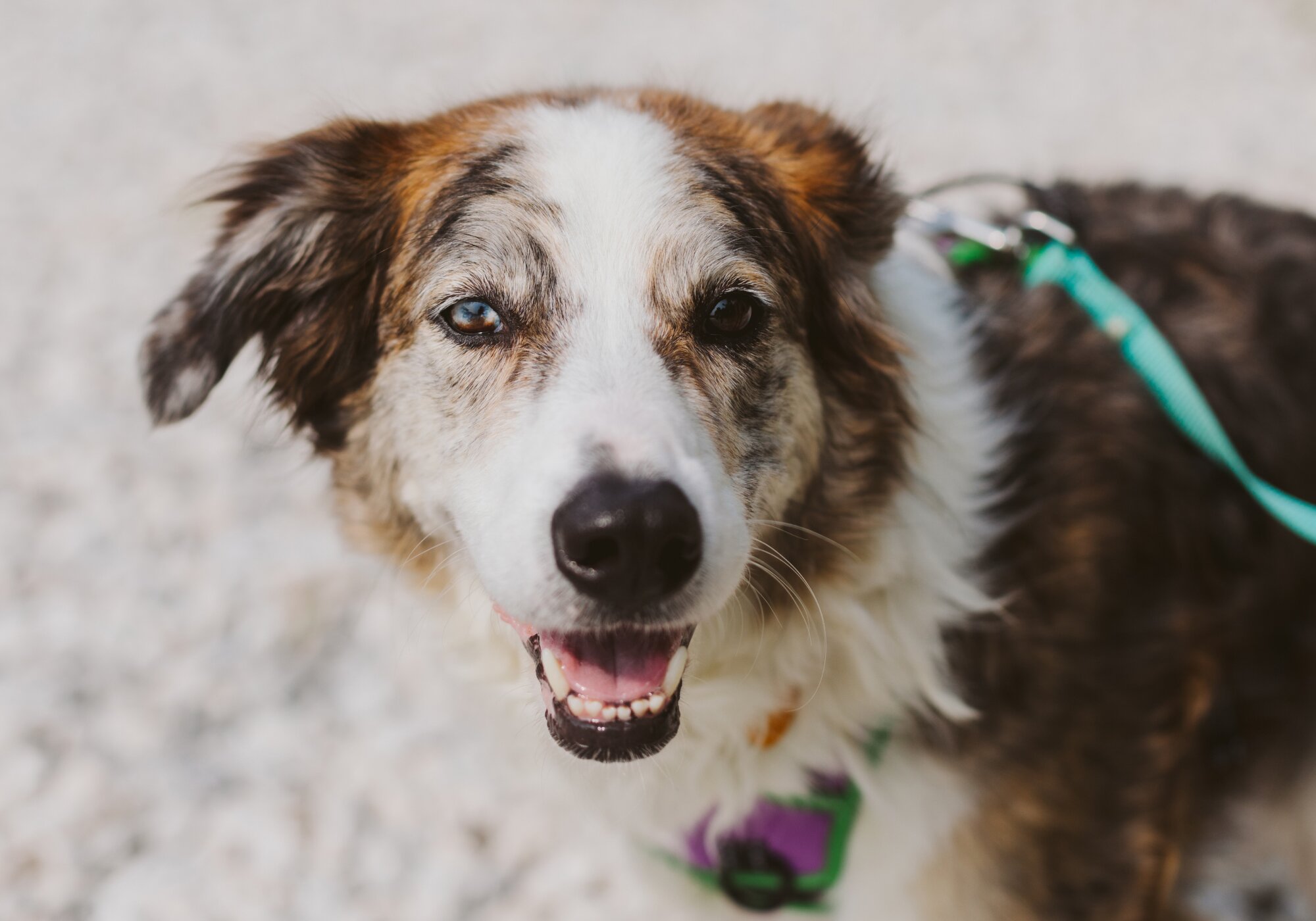Dogs are natural-born predators. They like to run, hunt, chase after wildlife, and get dirty.
While rummaging through a pile of leaves may sound like the perfect afternoon activity for a pup, it can also be a source of ticks.
Attracting ticks can be as simple as a quick walk through a park. But harmful parasites shouldn’t discourage you from exercising your pet.
Prevent infection and disease by learning what a tick looks like on a dog and the top areas to spot one.
What does a tick look like on a dog
Ticks are a type of Arachnid that survive on the blood of mammals and can transfer a variety of infectious diseases. There are over 900 species of hard and soft ticks but only 90 live in the United States.
Several types of ticks are most commonly found on dogs. One study found that there are four species that make up 95% of the ticks on dogs.
These include:
- American dog or wood tick
- Blacklegged or deer tick
- Brown dog or kennel tick
- Lone star tick
When assessing a tick on your dog it's important to understand what you’re looking at to know what steps to take next. Though each species has unique characteristics, all types can pose a threat to your dog based on their size and life cycle stage.

There are 4 phases of an active tick on your dog:
- Tick larvae
- Tick nymphs
- Unfed adult ticks
- Engorged adult ticks

Tick larvae
After ticks hatch they become larvae. At this stage they are more of a pain in the neck than a major threat. Larvae rarely transmit tick-borne disease. They can contract Lyme disease-causing bacteria (Borrelia burgdorferi) from small rodents, but do not transfer any infection to the host.
What to look for: These parasites are very small and can be hard to see. Larvae can sometimes look like grains of sand or dark specks. To specify a larva from a nymph, count their legs. One key trait of tick larvae is that they only have six legs.

Tick nymphs
Nymphs are very similar to adult ticks. They’ve grown their last pair of legs and are a much larger threat to your pets. While much smaller than adult ticks, they still need to feed to molt into an adult and can transmit disease to your dog.
What to look for: Nymphs get their alias because of how similar they look to a seed (such as a sesame seed). Due to their small size and painless bite, they are difficult to spot, so look out for tiny, seed-like bugs with eight legs.

Unfed adult ticks
Adult ticks are not created the same. While male ticks aren’t much fun to deal with, the biggest threat to your dog is the adult female tick. To survive, female ticks need to feed so they can mate and breed.
What to look for: When assessing an adult tick, look at their size, the number of legs, and markings on their backs. Before feeding, adult ticks are about ¼ of an inch. Males and females are usually flat and oval or teardrop-shaped. But, females usually have off-white spots or stripes.

Engorged adult ticks
Ticks have two distinct parts. Their “head” contains two mouthparts and their “body” stores their meal. When female ticks feed, they only embed their head into the host’s skin. This is important to note as you encounter other lumps and bumps when scanning your pet.
What to look for: Fully embedded ticks on dogs can grow up to ½ inch and sometimes look like blisters or warts. This makes it hard to tell the difference between a tick or skin tag on a dog.
So what does an embedded tick look like on a dog? If you think you’ve found a fully embedded tick, look closely for legs, a flesh-colored exterior, and evidence of blood in their bodies.
How do I know if my dog has a tick
Ticks are stealthy but intrusive pests. This means they aren’t the easiest to find. However, you can be proactive to find out if your dog has ticks.
1. Check for ticks often.
Regular tick checks are important to prevent a tick bite. This is especially important with long-haired breeds like golden retrievers, border collies, and spaniels. After trips to the park, time in the backyard, and even short walks run your fingers over their body to inspect for a crawling bug or bump on your dog.
2. Keep your pet groomed.
To ensure you can easily check your pet for ticks, they should visit the groomer regularly. Bathe and shampoo your dog when they get really dirty to keep their skin clean. At the bare minimum, brushing your dog with a flea comb can be a great way to look for and avoid ticks.
3. Know where ticks like to attach.
Research shows that certain species of ticks prefer different locations on your dog. Regardless of where they cozy up, ticks tend to seek out areas close to the skin that have easy access for feeding.
How to spot a tick on a dog
A routine part of being a good pet parent is checking your dog’s physical health and appearance. This includes scanning for lumps, small bumps, and the occasional critter lurking in your dog’s skin.
Where to look for ticks on dogs

Nearly all of the most common species of ticks like to hang out near your dog’s head, ears, and neck. Some tend to migrate in between and under your pet’s legs and toes. This can make it hard to know how to find ticks on dogs.
If you aren’t sure where to start, try these 6 common places ticks hide on dogs.
1. Eyes.
Eyes are a common place for skin tags, buildup, and other gunk. Keep your dog’s eyes cleaned and double-check near tear ducts for any ticks that might’ve latched on.
Types to look for: American dog tick, Brown dog tick, Blacklegged tick, Lone star tick
2. Ears (inside and out).
Dog’s ears are different from human ears because they have long ear canals and lots of hair throughout. This combination creates a warm and inviting home for ticks. Make sure you examine inside and around your dog’s ears for signs of ticks.
Types to look for: American dog tick, Brown dog tick, Blacklegged tick, Lone star tick
3. Neck and underneath the collar.
Some pet parents prefer to keep their pet’s collar on at all times. If that’s the case, it makes it even more important to check their neck and underneath their collar for ticks.
Collars are convenient protectors of these creepy crawlers. So, make sure you remove any coverings or bandanas when scanning your pet.
Types to look for: American dog tick, Blacklegged tick, Brown dog tick, Lone star tick
4. Armpits and legs.
Your dog’s armpits can make warm and cozy homes for ticks to feed and breed. Don’t forget to carefully lift their legs to look underneath and around their chest.
Types to look for: Lone star tick
5. Groin and tail.
Just like armpits, a dog’s groin area can have less hair and easier access to skin for feeding. Check between their legs and at the base of their tail to ensure ticks haven’t settled in.
Types to look for: Brown dog tick, Lone star tick
6. Paws and toes.
Ticks want secure spots to attach and feed, which is why your dog’s paws make great hiding spots. Be sure to check between digital and metacarpal pads—aka toes. Especially dogs who have webbed feet like Labrador retrievers, poodles, and dachshunds.
Types to look for: Brown dog tick
What should I do if my dog has ticks
You may be wondering, “Do I need to take my dog to the vet if I find a tick?” The short answer is no. But it’s always good to consult with your vet for recommendations if you:
- Aren’t sure how long the tick has been on your pet
- Are struggling with tick removal
- Don’t feel comfortable removing a tick
- Think your pet has an infection
It’s not uncommon for your pet to suffer from ticks during their lifetime. With the right tools and tips, tick removal is possible without a vet visit.
Start by having a good understanding of what ticks look like on a dog and where they like to hide to avoid a tick problem. As always, using a vet-quality flea and tick preventative is a great way to enhance flea and tick prevention and the life of your best friend.


